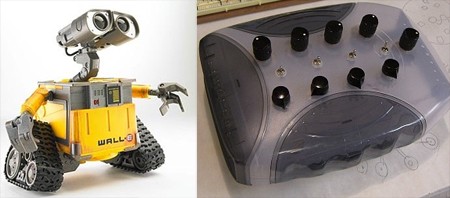
We’ve covered sequencers before, but reader [Johan] sent in his latest project that is much more minimalistic approach. Dubbed the BBox, he based his drum generator on an Arduino and an LCD display. Rather than synthesizing sound, the Arduino just outputs MIDI which is then interpreted by his Roland Juno-D. In building the device he used a favorite trick of ours to keep the interface clean. He then found an awesome banana box to use as a case. Although, the project may not be as functional as some of the others out there, it certainly has flair. Video of it in action after the break.














